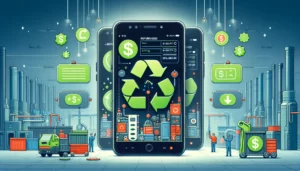The world is rapidly growing in population, with the 8 billion mark all set to be crossed in the next few years or so. To sustain this humongous population resources are a must. But as it continues to grow and amass, our resources are in peril. Food, shelter and electricity are the staple needs of a human being in the 21st century. With the latter being added to the essentials list very recently.
The demand for electricity is incredibly high. Most countries in Europe and North America have an unending supply of it. But places like Africa and Southeast Asia regularly face power outages and have a hard time getting on with life. This increasing demand means devices like batteries and inverters play a crucial role in life in these areas.
An inverter a 20th-century invention that was invented to convert DC to AC, it is not to be confused with a Converter which basically changes AC to DC. The device itself does not produce a current of any form and instead derives it from the DC source. It can be an electronic device in its entirety or a combination of mechanical effects (rotary apparatus) and electronic circuitry. Earlier designs were crude and inefficient. As the understanding and principles of electro-mechanics increased, newer designs like controlled rectifier inverters and rectifier pulse inverters were used. These more recent designs use semiconductors and transistors to aid switching between DC to AC. With cutting edge technology, modern-day inverters are solid state and use an H-Bridge configuration.
Other than just powering household appliances, inverters can have very specific applications. Some of which are:
- Induction heating is one of the many places where inverters play an essential role. They convert AC power to a higher frequency for AC power. In order to achieve this AC power is first Rectified to DC and then it is changed from DC to high-frequency AC. As the number of DC sources are reduced the structure becomes more reliable, and the voltage is higher in resolution due to the increased number of steps involved.
- Electroshock weapons like Tasers have a DC/AC inverter to generate several thousands of V AC out of a tiny battery. A compact high-frequency transformer first converts the DC into 200-400 V AC; it is rectified and stored in a high voltage capacitor. It stays there until a pre-set threshold voltage is reached, then the entire load is altogether dumped in a pulse transformer, which steps the output up to a ridiculous 20-60kV.
- HVDC power transmission systems use an inverter which rectifies AC power and then transfers it to another location. An inverter at the static inverter plant converts the received power back to AC. The inverter is generally synchronized with the grid frequency and phase and minimizes harmonic generation.
India is a country that is developing at a rapid pace, and its energy needs will only continue to increase. One can find the best inverterin market as well as online. And if the work and consumption demands are high,then one can opt for the best inverter in India from Luminous.




